I saw in the ParsleyJs library the folowing:

What does the expression !(function(f){...}) mean?
Is it a negation?
EDIT:
After some explanations, I observed that actually the code looks like
!( f(y){}( f(x){} ) );
or can be written as
!( f(z) );
or
!(Z);
where Z = f(z), z = f(y){}, and finally y = f(x){}...
So is not really clear what function executes the expression !(Z);